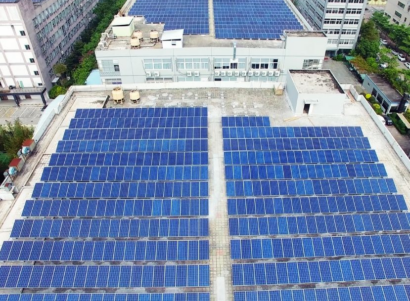The expression “when life hands you lemons, you make lemonade” is an apt aphorism for these difficult times. The Covid-19 pandemic, which first appeared in Wuhan China at the end of 2019, is wreaking havoc on the world; but, looking forward, this might offer opportunities that in normal times would be difficult to put into place. Specifically focusing on the energy sector, weaning global dependence on fossil fuels may be a silver lining of the pandemic. Most countries have an enormous potential for renewable energy production, and this might be the moment in history when renewable energy sources are more fully embraced. The combination of the impact of Covid-19 and economics may make this happen.
In addition to the terrible toll the coronavirus is having on human life, the pandemic also is causing turmoil in the global economy. Restrictions on movement of people, goods and services, severe travel limitations, and containment measures such as factory closures are impacting every sector of the global economy. Supply chains have been disrupted and financial market volatility has resulted in global losses in the trillions of dollars, surpassing previous financial crises. The Organization for Economic Cooperation and Development (OECD) predicts that Covid-19 will lower global GDP growth by 1.5 percent in 2020, half the rate projected before the virus outbreak.1 In the US, as of mid-July 2020, 45.7 million Americans filed for unemployment during the pandemic, a figure not seen since the Great Depression almost a century ago.2 Fears that the world will slip into a depression are not unfounded.
The energy sector, which is all-too familiar with boom and bust cycles, is also being affected by the coronavirus. Covid-19 has created a steep decline in industry productivity and a reduced demand for oil and gas, resulting in a decline in oil usage, lower capacity demands from the system, and plummeting oil and gas prices. In 2020, global oil demand is expected to contract for the first time since the global recession of 2009.3 Since early March 2020, oil prices have fallen precipitously to their lowest levels in two decades.4 Continued pumping of oil is creating a major oversupply in the markets and putting pressure on storage capacity, which is rapidly reaching its limit.
All evidence shows that a decline in active oil and gas rigs in North America is accelerating, and the number of new wells being drilled is poised to fall to its lowest level in at least a decade.5 At current prices, not one of the 100 largest drilling companies in the US can turn a profit. Even before the Covid-19 pandemic, the debt load for many oil and gas companies was high; since 2015, there were 215 bankruptcies, involving $130 billion in debt. Further, North American oil and gas drillers have a debt load of $100 billion that is set to mature in the next four years.6 The coronavirus has laid bare the fragile economics of the oil and gas and drilling industry.
On a more positive note, the reduction in fossil fuel usage has led to a remarkable fall in carbon and health damaging air pollutant emissions, all great news for protecting the health of the population. In New York, for example, carbon monoxide levels, largely produced from cars, have fallen by nearly 50 percent compared to the same time last year.7 Pollution and greenhouse gas emissions in China have plummeted and levels of nitrogen dioxide (NO₂) over cities and industrial areas in Asia and Europe were lower by as much as 40 percent compared to the same period in 2019.8 And, in India, where air pollution perennially darkens the sky in the sprawling urban cities, carbon dioxide emissions have dropped for the first time in four decades.9 It is estimated that globally emissions from human activity could decline by 8 percent in 2020, which would be the largest year-to-year drop ever recorded.10 In a very real-time way, the pandemic has shown what a low-carbon future might look like: clean air being the most obvious result.
The Covid-19 pandemic provides a unique opportunity, with potentially profound implications for climate change mitigation. The renewable energy sector is well suited to effect a transition from fossil fuels to more climate-friendly energy sources. Renewable energy sources make up 26 percent of the world’s electricity today, and are expected to reach 30 percent by 2024.11 Deloitte’s 2020 Renewable Energy Industry Outlook Report concludes that the renewable energy industry is “primed to enter a new phase of growth driven largely by increasing customer demand, cost competitiveness, innovation, and collaboration”.12 Acknowledging the changes in the oil and gas environment, BP is writing down as much as $17.5 billion of its assets and might leave some of its oil and gas in the ground because of lower energy prices and weakened demand amid the global crisis caused by the novel coronavirus.13 BP is betting that renewable energy resources will be the fastest-growing source of energy, providing around 14 percent of global primary energy by 2040.14
Should the world return to “business as usual” post-pandemic, we will be missing an opportunity to build a clean energy system that would be less vulnerable to the swing in oil and gas prices. In fact, in a shift in strategic direction, five out of the eight major oil companies have made considerable investments into renewable energy (i.e., wind and solar).15 Collectively, in 2018, the world’s top 24 oil companies have invested $3.4 billion in low carbon energy technology. In April 2020, Royal Dutch Shell told investors that it plans to stop adding greenhouse gases to the atmosphere by 2050 and British-Dutch said that it will strive to achieve “net zero” emissions from production by 2050.16
It doesn’t matter what the ulterior motives of the oil companies are, what matters is that weaning the world from its dependence on oil by diversifying its book of business is a strategic economic move and one that is good for the environment, people’s health, and climate, especially since most of the large oil companies are under pressure from shareholders and climate activists to reduce their carbon emissions from their hydrocarbon businesses to limit global warming. The US Energy Information Administration reports that America’s total coal consumption in 2020 will fall for the first time below nuclear power and renewable power (including wind, solar, hydroelectric dams, geothermal, and biomass).17 However, in order to enable the renewable energy sector to be an effective option, barriers to renewables, including political, regulatory, technical, financial, and economic, and geographical, need to be addressed.
Because initial investment costs for renewable energy systems are usually high, incentives for investors to support the development of renewable energy technologies and renewable energy sources need to be put in place. There is precedence for this. After the recession in 2008, Congress passed the American Recovery and Reinvestment Act (ARRA) of 2009, which set a precedent for successful clean energy stimulus programs that also benefited the U.S. economy as a whole. Maybe the Covid-19 pandemic will provide the impetus for this, which would be very good for public health and the environment.
REFERENCES
- OECD Economic Outlook, Interim Report March 2020. Coronavirus: the world economy at risk. https://www.oecd.org/economic-outlook/. (date accessed April 17, 2020).
- Lambert L. 45.7 million have filed for unemployment during the pandemic. Fortune. June 18, 2020. https://fortune.com/2020/06/18/45-7-million-have-filed-unemployment-during-the-pandemic-greater-than-the-combined-population-of-23-states/. (date accessed July 16, 2020).
- IEA. Oil 2020. https://www.iea.org/reports/oil-2020#key-findings. (date accessed July 15, 2020).
- Baffes J, Kose MA, Ohnsorge F, Stocker M. The great plunge in oil prices: causes, consequences, and policy responses. World Bank. http://pubdocs.worldbank.org/en/339801451407117632/PRN01Mar2015OilPrices.pdf. (date accessed July 15, 2020).
- McDonnell T. The collapse of the US fracking industry, in seven charts. Quartz. April 3, 2020. https://qz.com/1830456/how-the-coronavirus-is-disrupting-the-us-fracking-industry/. (date accessed April 13, 2020).
- McLean B. Coronavirus May Kill Our Fracking Fever Dream. New York Times. April 10, 2020. https://www.nytimes.com/2020/04/10/opinion/sunday/coronavirus-texas-fracking-layoffs.html. (date accessed April 15, 2020).
- Coronavirus: Air pollution and CO2 fall rapidly as virus spreads. https://www.bbc.com/news/science-environment-51944780. (date accessed April 15 2020).
- Will Covid-19 have a lasting impact on the environment?. https://www.bbc.com/future/article/20200326-covid-19-the-impact-of-coronavirus-on-the-environment. (date accessed April 15, 2020).
- Analysis: India’s CO2 emissions fall for first time in four decades amid coronavirus. Carbon Brief. May 12, 2020. https://www.carbonbrief.org/analysis-indias-co2-emissions-fall-for-first-time-in-four-decades-amid-coronavirus. (date accessed July 15, 2020).
- US IEA. Global Energy Review 2020. The impacts of the Covid-19 crisis on global energy demand and CO2 emissions. April, 2020. https://www.iea.org/reports/global-energy-review-2020. (date accessed July 16, 2020).
- US IEA. Renewables. https://www.iea.org/fuels-and-technologies/renewables. (date accessed April 16 2020).
- Deloitte. 2020 Renewable Energy Industry Outlook. https://www2.deloitte.com/us/en/pages/energy-and-resources/articles/renewable-energy-outlook.html. (date accessed April 15 2020).
- BP Takes $17.5 Billion Write-Down, Expects Oil Price to Stay Low. Wall Street Journal. June 15, 2020. https://www.wsj.com/articles/bp-takes-17-5-billion-write-down-expects-oil-price-to-stay-low-11592211169#:~:text=LONDON%E2%80%94%20BP%20PLC%20is%20writing,caused. (date accessed July 15, 2020).
- BP Energy Outlook 2018. https://www.bp.com/content/dam/bp/business-sites/en/global/corporate/pdfs/energy-economics/energy-outlook/bp-energy-outlook-2018.pdf. (date accessed April 15 2020).
- Pickl M. The renewable energy strategies of oil majors – From oil to energy? Energy Strategy Reviews. 26 (2019). DOI: 10.1016/j.esr.2019.100370.
- Oil and gas giant Shell targets ‘net zero’ emissions by 2050. https://www.washingtonpost.com/world/oil-and-gas-giant-shell-targets-net-zero-emissions-by-2050/2020/04/16/41bf6712-7fe7-11ea-84c2-0792d8591911_story.html. (date accessed April 17 2020).
- US EIA. U.S. renewable energy consumption surpasses coal for the first time in over 130 years. May 26, 2020. https://www.eia.gov/todayinenergy/detail.php?id=43895. (date accessed July 16, 2020).














